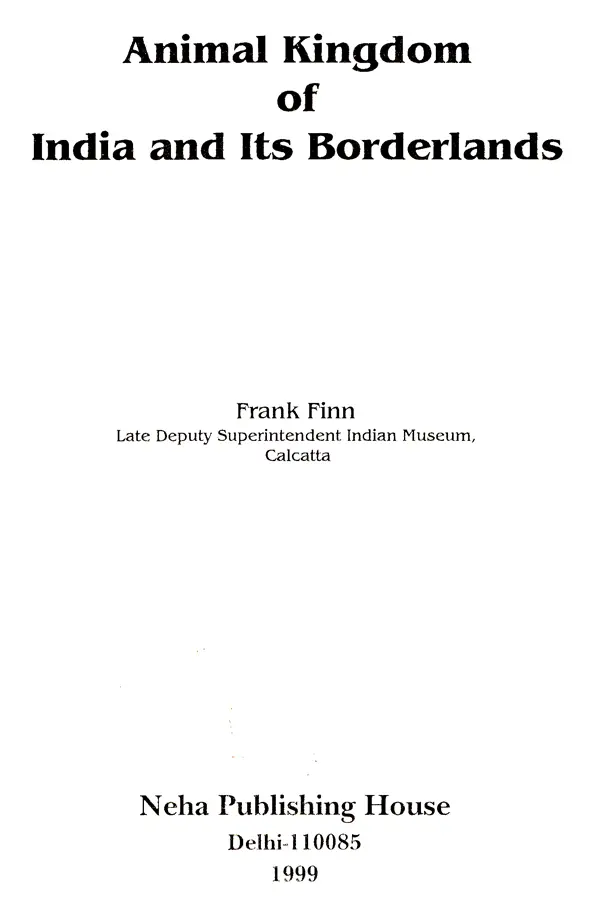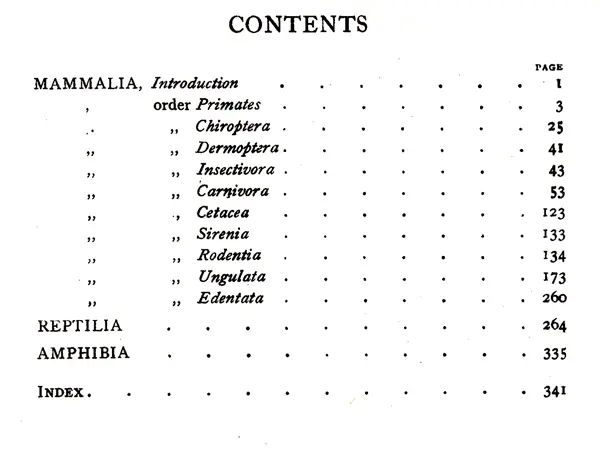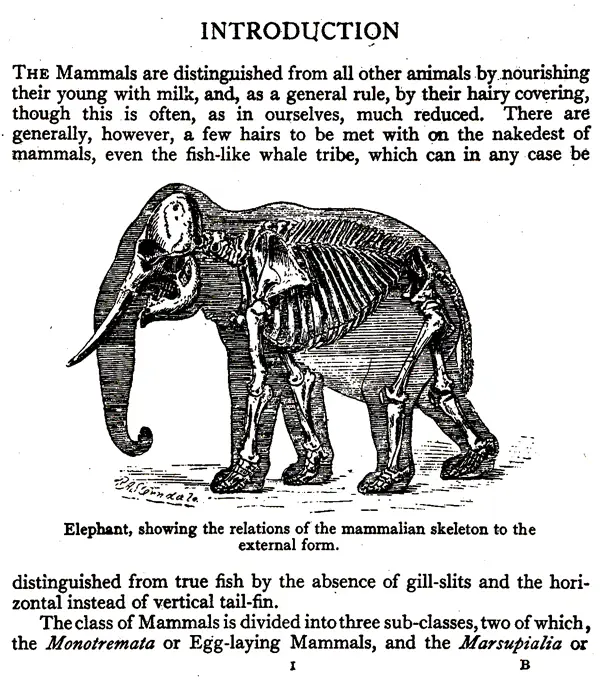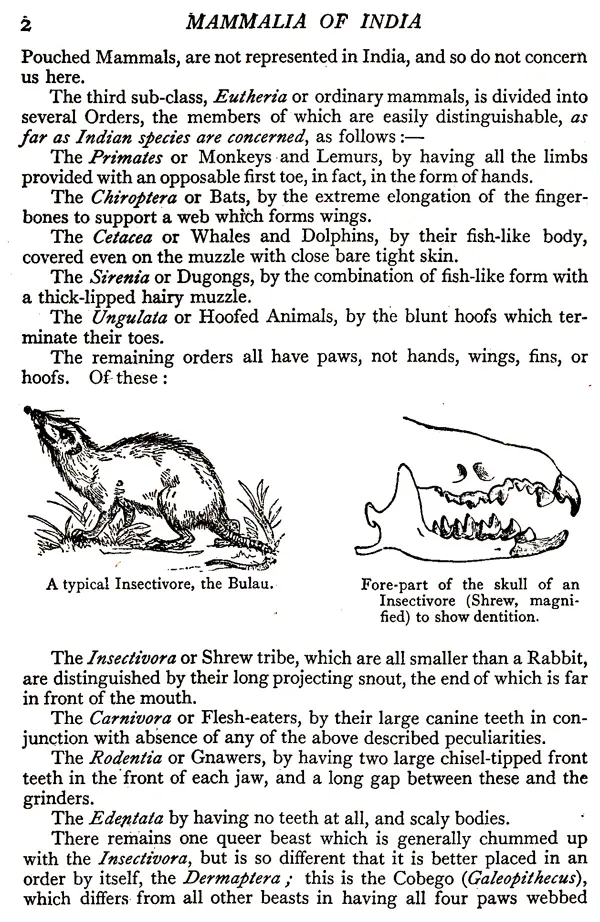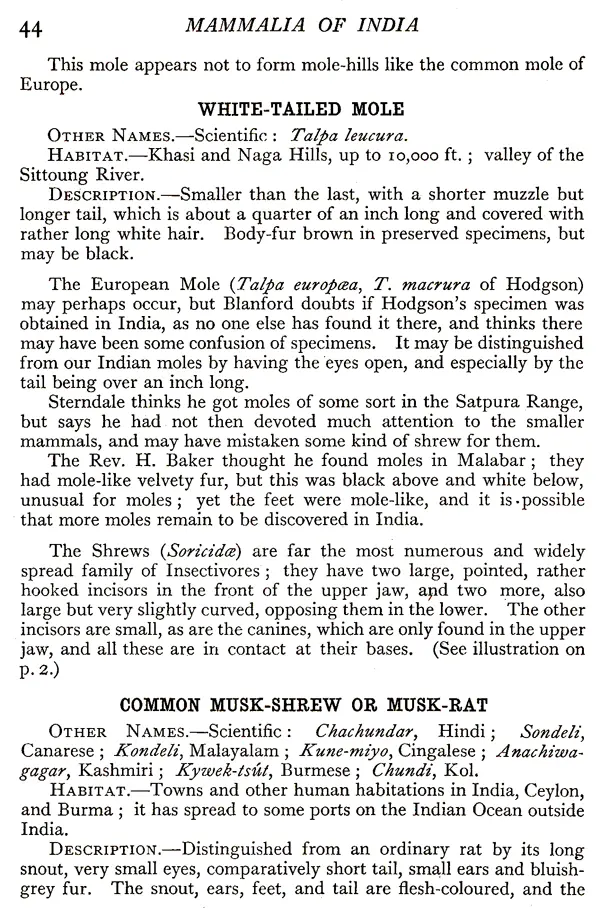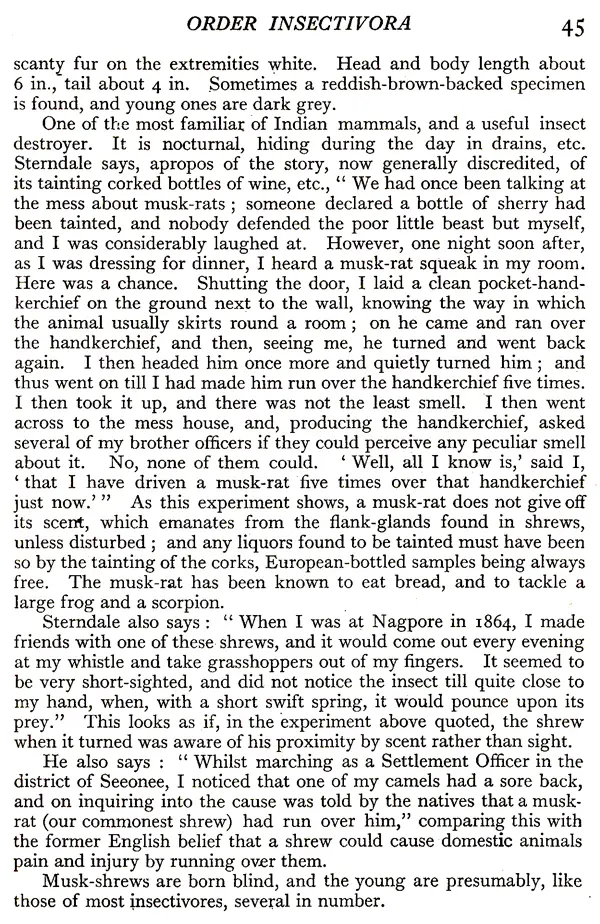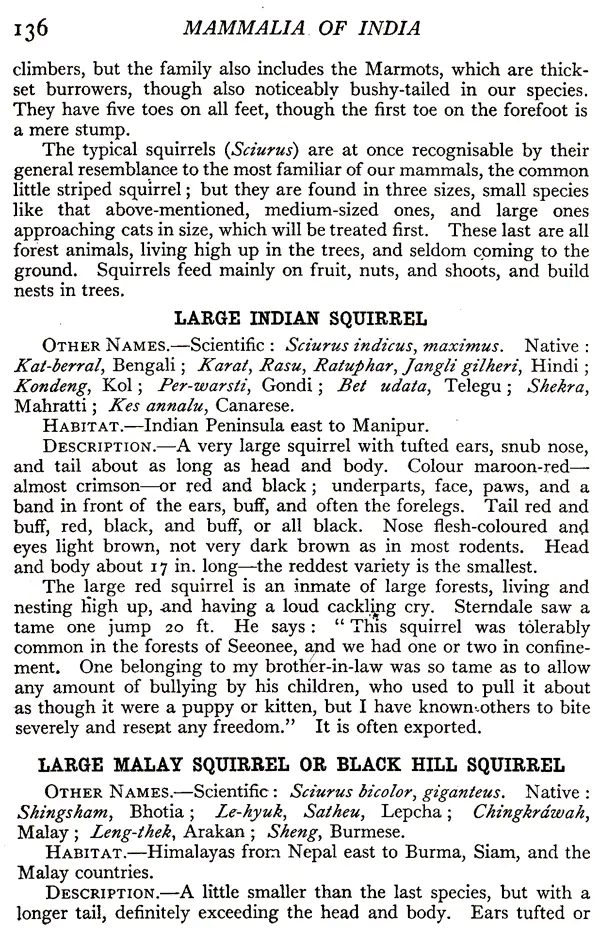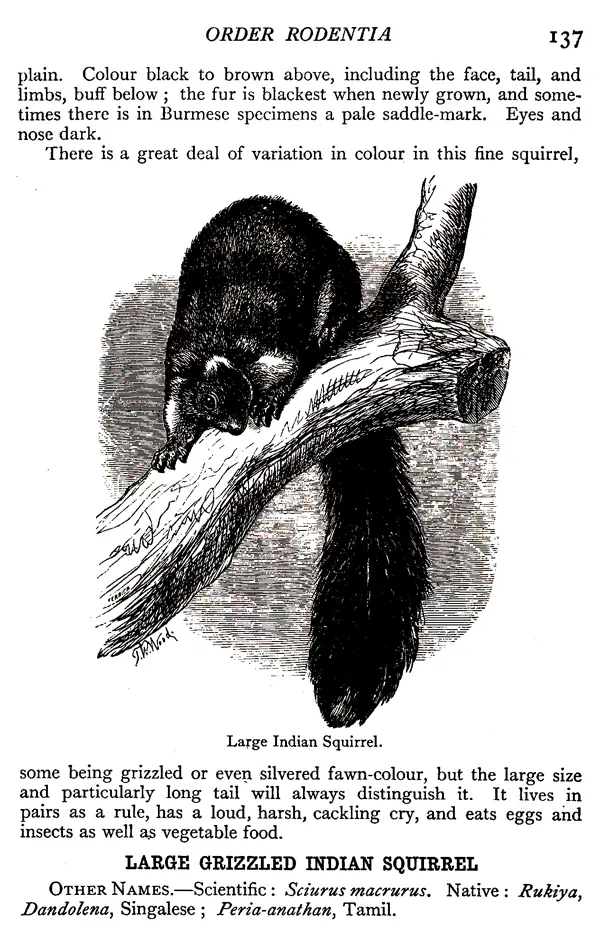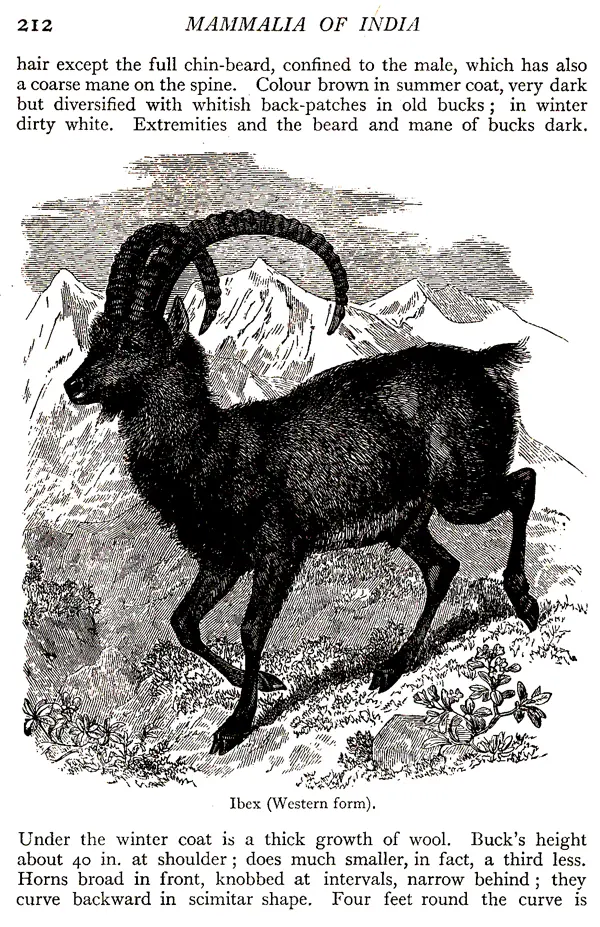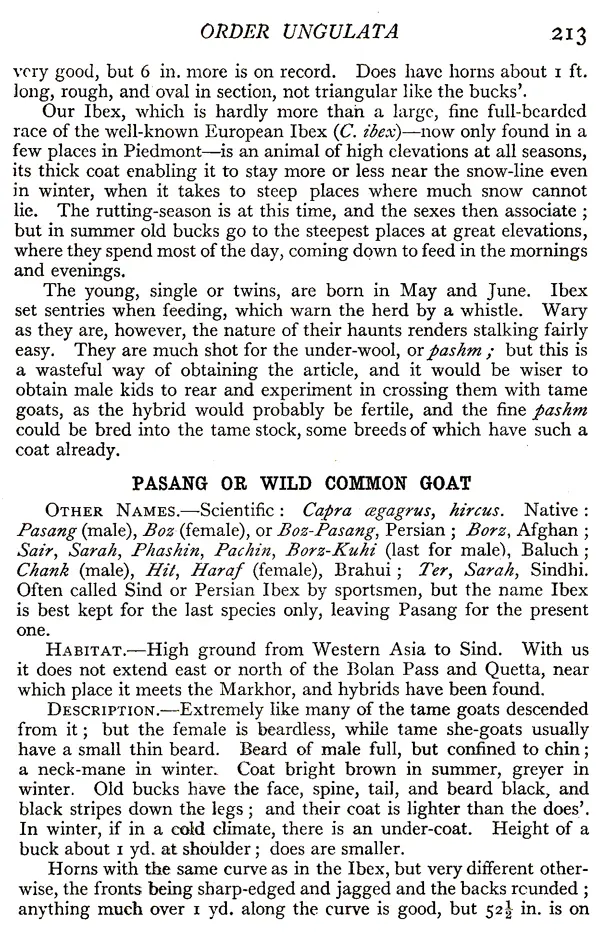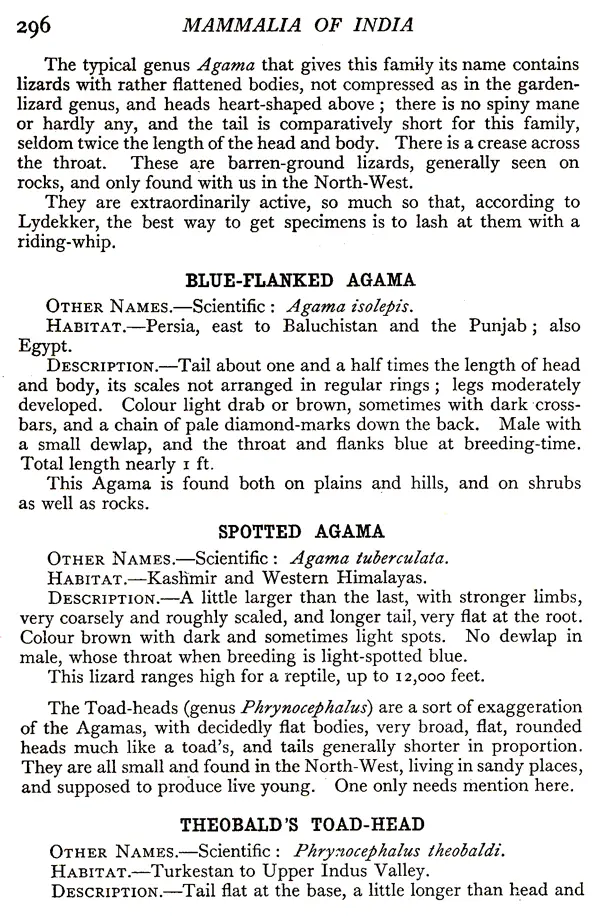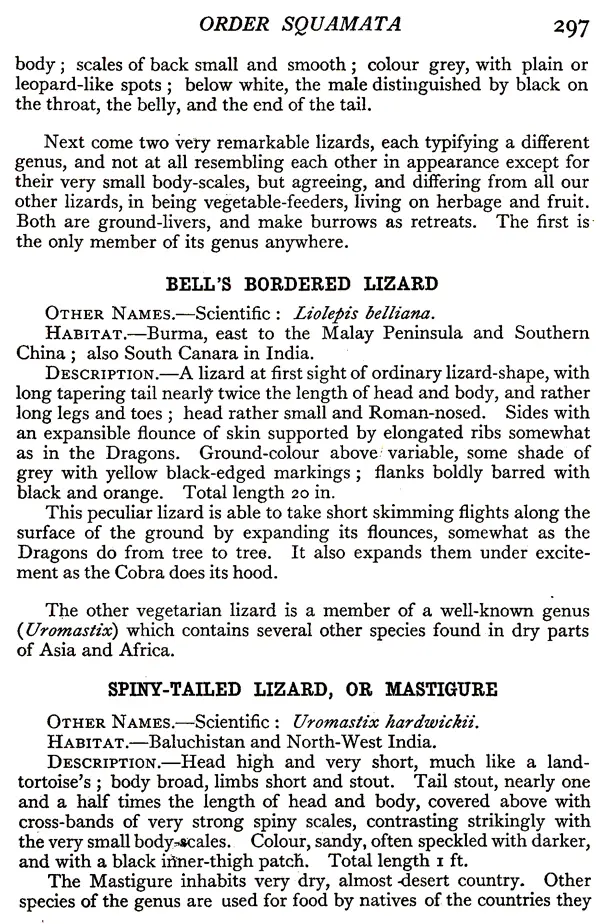
Animal Kingdom of India and Its Borderland
Book Specification
| Item Code: | UAF611 |
| Author: | Frank Finn |
| Publisher: | Sharada Publishing House, Delhi |
| Language: | English |
| Edition: | 1999 |
| Pages: | 347 (Throughout Black and White Illustrations) |
| Cover: | HARDCOVER |
| Other Details | 9.00 X 5.50 inch |
| Weight | 560 gm |
Book Description
India and its neighbouring countries have a vast kingdom of animals including mammalians, reptiles and amphibians. A scientific approach in studying these beasts reveals that each of them has very interesting tale to tell. The present book is designed to serve as a ready recknoner in understanding the different animals inhabiting India and its neighbouring lands with their popular names, scientific names, habitat and other necessary details about them with illustrations.
The book starts with a comprehensive description of mammals and closes with study of reptiles and amphibians. The mammals are sub-divided into Mono tremata (Egg-laying mammals), Marsu pialia (Pouched mammals), and Eutheria (Ordinary mammals). The Indian species are the Eutherians which has several orders like Primates (Monkeys and Lemurs), Chiroptera (Bats), Cetacea (Whales and Dolphins), Sirenia (Dugongs), Ungulata (Hooped animals), Insectivora (Shrew tribe), Carnivora (Flesh eaters), Rodentia (Gnawers), Edentata (with no teeth), etc.
IN preparing the present revised and abridged edition of Sterndale's well-known work, the editor has quoted the author's original observations verbatim as far as possible, and has relied on condensa tion and on the omission of unnecessary matter, and of such as is only likely to be of interest to specialists, for reduction of the volume to the compass of a practical manual for beginners. Thus in most groups only such species as are likely to attract attention are dealt with, though in some all are described.
Sterndale's arrangement has been adhered to as far as possible, and the scientific names are for the most part those used by him and by Blanford in his standard work, the "Mammalia " volume in the Fauna of British India series. To this, particularly in the matter of vernacular names and of distribution, the editor has been. especially indebted; and he has also to express his thanks to Messrs. Longmans, Green & Co. for permission to use certain illustrations from Tennent's Natural History of Ceylon.
**Contents and Sample Pages**
